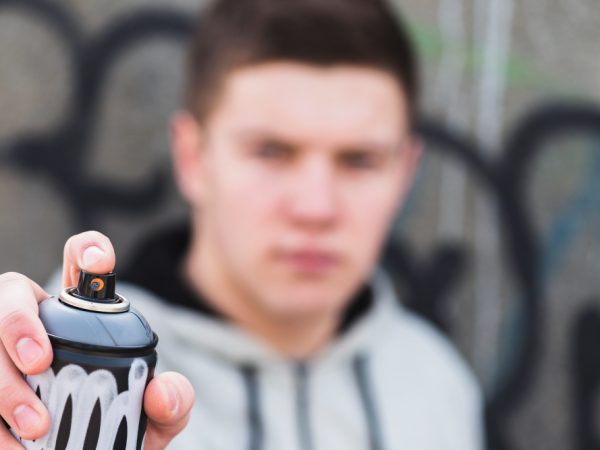Are Silk Sheets Hot to Sleep On? The Truth About Silk Bedding

Silk bedding has long been associated with luxury, comfort, and elegance. Its soft and smooth feel makes it one of the most desirable materials for sheets and pillowcases. But many people wonder, are silk sheets hot to sleep on? The answer depends on understanding how silk works, its natural temperature-regulating properties, and how it compares with other fabrics. Let’s explore the truth about silk bedding, how it affects your sleep temperature, and why it might be one of the best materials for year-round comfort.
Understanding Silk as a Natural Fiber
Silk is a protein-based natural fiber produced by silkworms. Unlike synthetic fabrics, which can trap heat and moisture, silk fibers are breathable and lightweight. Each silk thread contains tiny air pockets that help with temperature regulation, allowing the fabric to retain warmth in the winter and release heat in the summer. This unique structure makes silk one of the most adaptive fabrics for sleeping comfort.
Silk’s natural proteins also make it hypoallergenic and resistant to dust mites, mold, and mildew. This adds another layer of comfort for those who have sensitive skin or allergies.
The Myth About Silk Being Too Hot
One of the most common misconceptions about silk is that it makes you overheat while sleeping. In reality, high-quality silk sheets are not hot — they are thermoregulating. This means silk naturally adjusts to your body temperature. When it’s warm, the fibers allow excess heat to dissipate; when it’s cool, they trap warmth to keep you cozy.
People often confuse silk with satin or synthetic blends that mimic silk’s appearance but lack its breathability. Genuine mulberry silk, for example, feels cool to the touch and stays comfortable throughout the night.
How Silk Regulates Temperature
Silk’s ability to regulate temperature comes from its natural structure. The fiber is made up of fibroin, a protein that allows air to circulate while also retaining a small amount of moisture. This helps keep your skin hydrated and prevents overheating.
Silk also wicks away moisture from the body more efficiently than cotton or polyester. So if you tend to sweat at night, silk sheets can help you stay dry and comfortable. They don’t cling to the skin, and they allow airflow between your body and the bedding surface.
Comparing Silk with Cotton and Satin Sheets
To understand whether silk sheets are hot, it’s helpful to compare them with other popular materials like cotton and satin.
- Cotton is breathable and absorbent but can retain moisture, which sometimes makes it feel damp or heavy in humid conditions.
- Satin, on the other hand, is often made from synthetic fibers like polyester or nylon. It may look similar to silk but tends to trap heat and restrict airflow.
- Silk combines the best of both worlds. It’s breathable like cotton but smoother and more temperature-responsive. It adjusts naturally to environmental changes, keeping you comfortable across seasons.
If you sleep hot or live in a warm climate, real silk sheets will likely keep you cooler than synthetic options.
The Role of Thread Count and Weave
Thread count is often discussed when choosing bedding, but with silk, the momme weight is more relevant. Momme (pronounced “mommy”) measures the density and quality of silk. A higher momme count means the fabric is thicker, more durable, and sometimes slightly warmer. For year-round use, silk with a momme weight between 19 and 25 is ideal — offering both breathability and durability.
The weave also affects how silk feels against your skin. A charmeuse weave, which is smooth and shiny on one side, is commonly used for bedding and contributes to silk’s luxurious texture and cooling feel.
Benefits of Sleeping on Silk Sheets
Beyond temperature regulation, silk bedding offers a range of benefits that enhance overall sleep quality and health:
- Moisture balance: Silk naturally wicks away sweat without drying your skin.
- Skin-friendly: It reduces friction, helping prevent wrinkles and skin irritation.
- Hair health: Silk pillowcases help reduce tangles, frizz, and split ends.
- Hypoallergenic: Ideal for people with allergies or sensitive skin.
- Long-lasting comfort: With proper care, silk bedding can last many years while maintaining its smooth texture.
These qualities make silk not only luxurious but practical for daily use.
When Silk Sheets Might Feel Warm
Although silk is generally cooling, there are circumstances where it can feel warmer. For example, if your bedroom temperature is high, the body’s natural heat may not dissipate quickly enough. In such cases, combining silk sheets with lightweight blankets or breathable duvets helps maintain balance.
Additionally, a very high momme weight (above 25) can make silk feel slightly heavier and warmer. Choosing the right weight and keeping your sleep environment well-ventilated ensures optimal comfort.
How to Care for Silk Bedding for Maximum Comfort
Proper care plays a big role in how silk feels over time. Always wash silk sheets gently using cool water and mild detergent. Avoid harsh chemicals and high heat, as they can damage the natural fibers. Air drying is best to preserve the sheen and softness.
Ironing should be done on low heat if necessary. When stored, silk should be kept in a cool, dry place away from direct sunlight. Following these steps helps maintain silk’s temperature-regulating properties and luxurious feel for years.
Best Seasons to Use Silk Sheets
One of the greatest advantages of silk bedding is its versatility. You can use it comfortably in every season. In summer, silk feels cool and fresh against the skin, preventing overheating. In winter, it provides light insulation without feeling heavy. Many users report that silk sheets help them maintain a steady temperature throughout the night, eliminating the need to switch bedding by season.
This adaptability makes silk an excellent investment for anyone seeking year-round comfort and better sleep quality.
Choosing the Right Silk Sheets for Your Needs
Not all silk bedding is created equal. To ensure comfort and breathability, look for 100 percent mulberry silk with a 19–25 momme weight and a charmeuse weave. Avoid blended or synthetic fabrics labeled as “silky” or “satin-like,” as they often trap heat.
Check for OEKO-TEX certification, which guarantees that the silk is free from harmful chemicals. Investing in high-quality silk ensures that you get all the temperature benefits and the durability that real silk provides.
Conclusion
So, are silk sheets hot to sleep on? The simple answer is no — not when you’re sleeping on genuine, high-quality silk. Silk’s natural fibers help regulate body temperature, wick away moisture, and provide breathable comfort that adapts to your environment. Whether it’s summer or winter, silk bedding keeps you cool, dry, and relaxed. Beyond temperature control, silk offers unmatched softness, skin and hair benefits, and a touch of luxury to your nightly routine. For anyone seeking a balance of comfort, beauty, and practicality, silk sheets are an investment worth making.
FAQs
1. Do silk sheets make you sweat at night?
No, real silk sheets do not make you sweat. They wick away moisture and allow air circulation, helping you stay dry and comfortable all night.
2. Are silk sheets good for hot sleepers?
Yes, silk is an excellent choice for hot sleepers. It naturally adjusts to body temperature and releases excess heat, preventing overheating.
3. How do silk sheets compare to cotton sheets for cooling?
Silk sheets are smoother and more breathable than cotton. While both are good for cooling, silk feels cooler to the touch and better regulates body temperature.
4. Can I use silk sheets all year round?
Absolutely. Silk’s thermoregulating nature keeps you warm in winter and cool in summer, making it ideal for year-round use.
5. What type of silk is best for bedding?
Mulberry silk with a charmeuse weave and a momme weight between 19 and 25 is considered the best quality for bedding. It offers durability, softness, and excellent temperature control.
Also read: YubiKey Try Creating a PIN That’s More Complex: Understanding and Fixing the Issue











